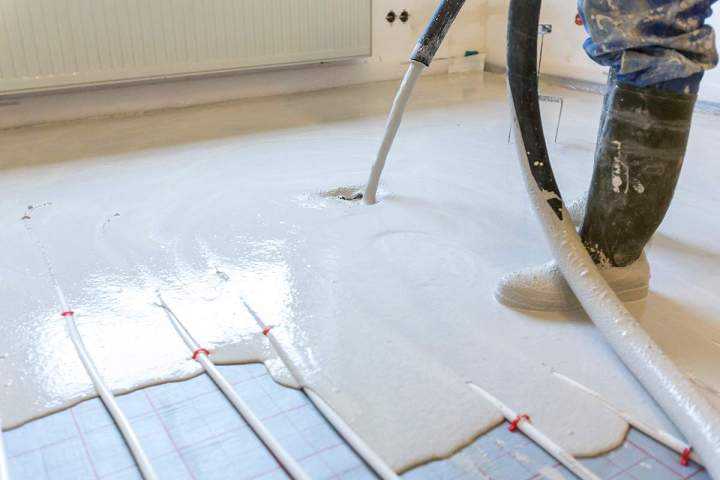Which floor covering should you choose with a water-based radiant floor heating system: a floating floor, wood, ceramic, or vinyl?
Floor Microclimat / August 14, 2025

1. Floating floor:
Floating floors are quite popular and very easy to install. However, there are a few details to check.
Advantages:
- Quick and easy installation.
- Modern floating floors are often designed to be compatible with underfloor heating systems. Some models even have thermal properties that help distribute heat more evenly.
Things to watch out for:
- Floating floors can tend to be slightly less heat-conductive than ceramic or vinyl, especially if they are made of composite wood or have an underlying layer of insulation. This means that it may take a little longer for the heat to spread.
- It is important that the floating floor is thin enough and that there is not too much insulation between the floor and the heating system, so as not to interfere with heat diffusion.
2. Wood:
Wood is an attractive and very warm choice. However, it requires special attention when combined with radiant flooring.
Advantages:
- Attractive and comfortable underfoot.
- Wood is a good heat conductor, especially if it is thin and of good quality.
Things to watch out for:
- Wood can react to heat: it can expand, swell, or crack with temperature changes. To prevent this, it is important to have a regulated thermostat to prevent the floor from overheating.
- It is best to choose hardwood or flooring specifically designed for underfloor heating. If the wood is too thick, the heat will have more difficulty spreading.
3. Ceramics:
Ceramic is an excellent choice for radiant flooring! In fact, it is one of the most recommended materials for this type of heating.
Advantages:
- Very good heat conductor: Ceramic quickly captures heat and distributes it evenly throughout the room. It allows you to take full advantage of the radiant heating system.
- Durability and ease of maintenance.
Things to watch out for:
- Nothing in particular, except that ceramic is a very rigid material, so it can feel a little cold to the touch in winter, but with radiant heating, this sensation is quickly offset by the gentle, constant warmth.
4. Vinyl:
Vinyl is a modern, affordable option that is becoming increasingly popular, especially in areas where humidity is present (such as kitchens or bathrooms).
Advantages:
- Very good thermal conductor, especially if it is thin. Vinyl will conduct heat well from your radiant floor, and it remains a flexible and comfortable material underfoot.
- Easy to install and often more affordable than other materials such as ceramic tile.
Things to watch out for:
- Make sure the vinyl is suitable for underfloor heating. Some types of vinyl, such as thick planks, may have poor thermal conductivity, which could slow down the heating process.
In summary:
- Floating floor: This can work, but you need to choose a model that is compatible with underfloor heating and avoid models that are too insulating.
- Wood: Very pleasant, but beware of temperature variations that can affect the wood. Opt for hardwood and regulate the temperature.
- Ceramic: This is one of the best choices! Heat is distributed optimally, and it is extremely durable.
- Vinyl: Also a very good choice, especially for its flexibility and cost. Make sure the vinyl is suitable for underfloor heating.